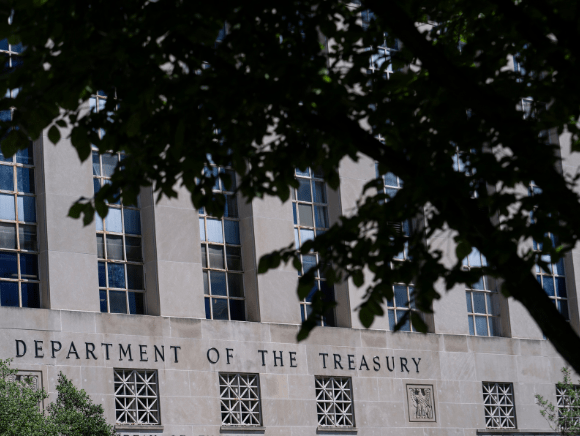It is that time of the year again: Debates over the US debt limit. Treasury Secretary Janet Yellen informed Congress that the federal government will reach its statutory debt limit on Jan. 19, forcing her department to begin “taking certain extraordinary measures to prevent the United States from defaulting on its obligations.” At this point, and considering how many times Washington has embarked upon these fights, does anyone really anticipate America defaulting?
The US Debt Limit is Near
In a letter to House Speaker Kevin McCarthy (R-CA), Yellen explained that she “is not currently able” to determine how long her emergency actions will enable the US to pay for government obligations. However, she noted that “it is unlikely that cash and extraordinary measures will be exhausted before early June.” Still, according to the Treasury Secretary, it is “critical that Congress act in a timely manner to increase or suspend the debt limit.”
 “Failure to meet the government’s obligations would cause irreparable harm to the U.S. economy, the livelihoods of all Americans, and global financial stability,” Yellen averred. “I respectfully urge Congress to act promptly to protect the full faith and credit of the United States.” In Dec. 2021, Congress approved raising the federal debt ceiling to roughly $31.4 trillion, allowing Uncle Sam to borrow enough cash to cover things like Social Security, interest on the national debt, tax refunds, and military salaries.
“Failure to meet the government’s obligations would cause irreparable harm to the U.S. economy, the livelihoods of all Americans, and global financial stability,” Yellen averred. “I respectfully urge Congress to act promptly to protect the full faith and credit of the United States.” In Dec. 2021, Congress approved raising the federal debt ceiling to roughly $31.4 trillion, allowing Uncle Sam to borrow enough cash to cover things like Social Security, interest on the national debt, tax refunds, and military salaries.
The country’s fiscal picture is bleak. In addition to the $31.4 trillion national debt, the US posted a $1.4 trillion budget deficit in 2022 and paid about $500 billion in interest payments. Plus, the United States faces approximately $200 trillion in unfunded liabilities and expenditures.
Banks Make Recession ‘Central Case’
Last year, many major financial institutions stated that a recession was unlikely to happen. However, as 2022 progressed, a growing chorus of banks made an economic downturn in 2023 as their base case. JPMorgan Chase CEO Jamie Dimon and Bank of American CEO Brian Moynihan are the two latest prominent individuals to fully pencil in a recession.
Although the US economy is robust due to well-financed consumers and businesses, Dimon warned that risks are forming, which accounts for the Wall Street titan posting a $2.3 billion provision for credit losses in the fourth quarter. JPMorgan Chase set aside funds for anticipated defaults, “reflecting a mild recession in the central case.”
 “We still do not know the ultimate effect of the headwinds coming from geopolitical tensions,” Dimon said, “including the war in Ukraine, the vulnerable state of energy and food supplies, persistent inflation that is eroding purchasing power and has pushed interest rates higher, and the unprecedented quantitative tightening.” On a call with investors, Moynihan purported that the bank is preparing for a recession and rising unemployment in 2023. “Our baseline scenario contemplates a mild recession. But we also add to that a downside scenario, and what this results in is 95% of our reserve methodology is weighted toward a recessionary environment in 2023,” he stated.
“We still do not know the ultimate effect of the headwinds coming from geopolitical tensions,” Dimon said, “including the war in Ukraine, the vulnerable state of energy and food supplies, persistent inflation that is eroding purchasing power and has pushed interest rates higher, and the unprecedented quantitative tightening.” On a call with investors, Moynihan purported that the bank is preparing for a recession and rising unemployment in 2023. “Our baseline scenario contemplates a mild recession. But we also add to that a downside scenario, and what this results in is 95% of our reserve methodology is weighted toward a recessionary environment in 2023,” he stated.
JPMorgan Chase shares rose about 2.5% on Friday to above $143, while Bank of America stock picked up more than 2% to top $35.
Americans Taking on More Debt
According to fresh data from the Federal Reserve, consumers added $27.96 billion in debt in November. This is down from $29.12 billion in October. Consumer credit rose at a seasonally adjusted annual rate of 7.1%, revolving credit (credit cards and lines of credit) soared nearly 17% year-over-year, and non-revolving credit (auto and student loans) advanced close to 4%. In the first 11 months of 2022, shoppers took on more than $328.5 billion in additional credit. This might seem like a modest sum, but this will cost more to service amid rising interest rates, weighing on household budgets.
A CPI Change is Coming
This may be a nothingburger, or it could be something crucial heading into the 2024 presidential election season. The Bureau of Labor Statistics (BLS) will adjust its methodology for calculating the consumer price index (CPI). As of February, when the January print is released, the CPI will be manufactured by relying on a single year of data rather than two years of consumption figures. In other words, in 2024, the buying statistics from 2022 will be excluded from the inflation readings. The objective is to bolster the accuracy and efficacy of the CPI for urban consumers (CPI-U), wage earners and clerical workers (CPI-W), and initial and interim versions of the Chained CPI-U. Put this in the filing cabinet for safekeeping.
Do you have an opinion about this article? We’d love to hear it! If you send your comments to [email protected], we might even publish your edited remarks in our new feature, LN Readers Speak Out. Remember to include the URL of the article along with your name, city, and state.
Please respect our republishing guidelines. Republication permission does not equal site endorsement. Click here.




































